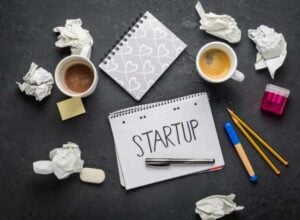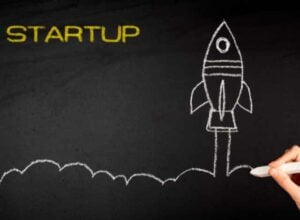A mentorship program proposal serves as a blueprint for establishing a structured relationship between mentors and mentees, aimed at fostering personal and professional growth. The primary purpose of such a proposal is to articulate the vision, goals, and operational framework of the mentorship initiative. It is essential to convey how the program will benefit participants, the organization, and the broader community.
By clearly defining the objectives and expected outcomes, the proposal can effectively communicate the value of the mentorship program to potential funders, stakeholders, and participants. Moreover, a well-crafted mentorship program proposal can serve as a strategic tool for securing funding and resources. Many organizations, including nonprofits and educational institutions, rely on grants to support their initiatives.
A compelling proposal not only outlines the need for mentorship but also demonstrates how the program aligns with the funder’s mission and priorities. By presenting a clear rationale for the program, along with evidence of its potential impact, organizations can enhance their chances of receiving financial support and community buy-in.
Identifying the Target Audience and Needs Assessment
Conducting a Thorough Needs Assessment
This involves conducting a thorough needs assessment to gather data on potential participants, including their demographics, backgrounds, and professional aspirations. Surveys, interviews, and focus groups can be effective tools for collecting this information, providing insights into the challenges and opportunities faced by the target audience.
Understanding the Unique Challenges of the Target Audience
For instance, if a company aims to implement a mentorship program for young professionals in the tech industry, it is vital to understand their unique challenges, such as navigating workplace dynamics or acquiring new skills. By engaging with potential mentees and mentors during the needs assessment phase, organizations can identify gaps in existing support systems and design a program that addresses these issues.
Enhancing Participant Engagement and Achieving Meaningful Outcomes
This targeted approach not only enhances participant engagement but also increases the likelihood of achieving meaningful outcomes.
Outlining the Structure and Components of the Proposal
A well-structured mentorship program proposal should include several key components that provide a comprehensive overview of the initiative. Start with an introduction that outlines the purpose of the proposal and provides context for the mentorship program. Following this, include sections that detail the program’s structure, such as the selection process for mentors and mentees, training protocols, and meeting frequency.
Clearly defining these elements helps stakeholders understand how the program will operate and ensures that all participants are on the same page. Additionally, it is essential to include information about the roles and responsibilities of mentors and mentees within the proposal. This clarity helps set expectations and fosters accountability among participants.
For example, mentors may be expected to commit a certain number of hours each month to meet with their mentees, while mentees may be encouraged to set specific goals for their development. By outlining these components in detail, organizations can create a roadmap that guides implementation and enhances overall program effectiveness.
Establishing Goals and Objectives for the Mentorship Program
Establishing clear goals and objectives is crucial for measuring the success of a mentorship program. Goals should be broad statements that reflect the overall vision of the initiative, while objectives should be specific, measurable, achievable, relevant, and time-bound (SMART). For instance, a goal might be to enhance leadership skills among participants, while an objective could specify that 80% of mentees will report improved confidence in their leadership abilities within six months of completing the program.
In addition to individual development goals, organizations should consider broader objectives that align with their mission. For example, if a nonprofit organization aims to increase diversity in leadership roles within its sector, it could set an objective to match at least 50% of its mentees from underrepresented backgrounds with experienced mentors in leadership positions. By establishing both individual and organizational objectives, organizations can create a mentorship program that not only supports personal growth but also contributes to systemic change.
Developing a Budget and Resource Plan
A comprehensive budget is essential for ensuring that a mentorship program is adequately funded and resourced. The budget should outline all anticipated expenses associated with implementing the program, including mentor training sessions, materials, marketing efforts, and any technology platforms used for communication or tracking progress. Additionally, organizations should consider potential revenue sources, such as grants or sponsorships, that can help offset costs.
When developing a resource plan, it is important to identify both human and material resources needed for successful implementation. This may include recruiting qualified mentors who possess relevant experience and skills or investing in software that facilitates communication between mentors and mentees. By carefully planning both budgetary and resource needs upfront, organizations can avoid potential pitfalls during implementation and ensure that they have everything necessary to run an effective mentorship program.
Creating an Evaluation and Measurement Plan
An evaluation and measurement plan is vital for assessing the effectiveness of a mentorship program over time. This plan should outline how success will be measured through both qualitative and quantitative metrics. For example, organizations might track participant satisfaction through surveys or interviews while also measuring specific outcomes such as skill development or career advancement.
Incorporating regular check-ins throughout the program can provide valuable feedback on its effectiveness. These check-ins can help identify areas for improvement while also celebrating successes along the way. By establishing clear evaluation criteria from the outset, organizations can ensure that they are continuously learning from their experiences and making data-driven decisions to enhance future iterations of the mentorship program.
Crafting a Compelling Executive Summary
The executive summary is often the first section that stakeholders will read in a mentorship program proposal; therefore, it must be engaging and informative. This summary should encapsulate the essence of the proposal by highlighting key points such as the purpose of the mentorship program, target audience, goals and objectives, budget considerations, and evaluation plans. A well-crafted executive summary serves as a persuasive tool that captures attention and encourages stakeholders to delve deeper into the proposal.
To make the executive summary compelling, consider using storytelling techniques or real-world examples that illustrate the potential impact of the mentorship program. For instance, sharing success stories from similar programs can help paint a vivid picture of what participants might achieve through mentorship. By combining factual information with relatable narratives, organizations can create an executive summary that resonates with readers and motivates them to support the initiative.
Seeking Feedback and Revisions from Stakeholders
Once a draft of the mentorship program proposal has been created, seeking feedback from stakeholders is crucial for refining its content and ensuring its alignment with organizational goals. Engaging mentors, mentees, board members, or community partners in this process can provide diverse perspectives that enhance the proposal’s quality. Constructive feedback can help identify gaps in information or areas where clarity is needed.
After gathering feedback, it is essential to revise the proposal accordingly. This iterative process not only strengthens the final document but also fosters buy-in from stakeholders who feel invested in shaping the mentorship program’s direction. By demonstrating openness to input and collaboration throughout this process, organizations can build stronger relationships with stakeholders while creating a more robust mentorship initiative that meets community needs effectively.
In conclusion, developing a successful mentorship program proposal requires careful planning and consideration across multiple dimensions—from understanding its purpose to crafting an engaging executive summary. By following these actionable tips and strategies outlined above, organizations can enhance their chances of securing support for their mentorship initiatives while ultimately making a positive impact on participants’ lives.























